13 Oct Biking Death Road in Bolivia: What You Need to Know
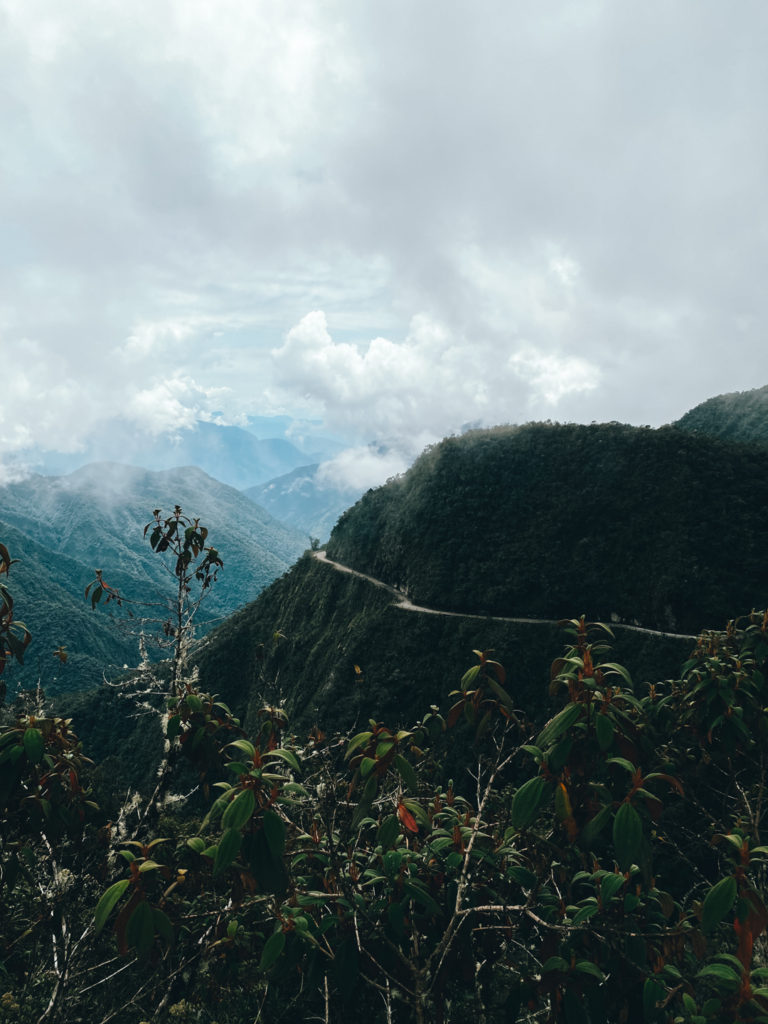
So you want to bike the most dangerous road in Bolivia? Biking Death Road is a bucket list activity for many tourists and I advise you tell your parents about AFTER you do it.
This infamous road winds its way against jungle cliffs and used to be the only road connecting La Paz to the Amazon and Brazil. Back in the day it claimed about 200 lives on average per year – hence the name. Since 2006 there’s been a newer road built and now Death Road (also known as North Yungas Road) is mostly used for tourism – specifically biking. Now a staple activity to do in La Paz, this is one of the best adrenaline rushes you can get.
But before you mindlessly jump on a bike, there’s a few things you should know about and be careful of during your trip. Afterall, it is called Death Road.
1. There are still some cars on the road
While most traffic is redirected to the new road, it’s worthing noting that you may still encounter a few cars either from other tour companies or people driving who live somewhere along the road. This shouldn’t be too big of concern though. Your tour guides will tell you how to handle coming in contact with a car and they’ll also be ahead of you to warn you of a vehicle coming. However, it’s still good to be mindful for yourself.
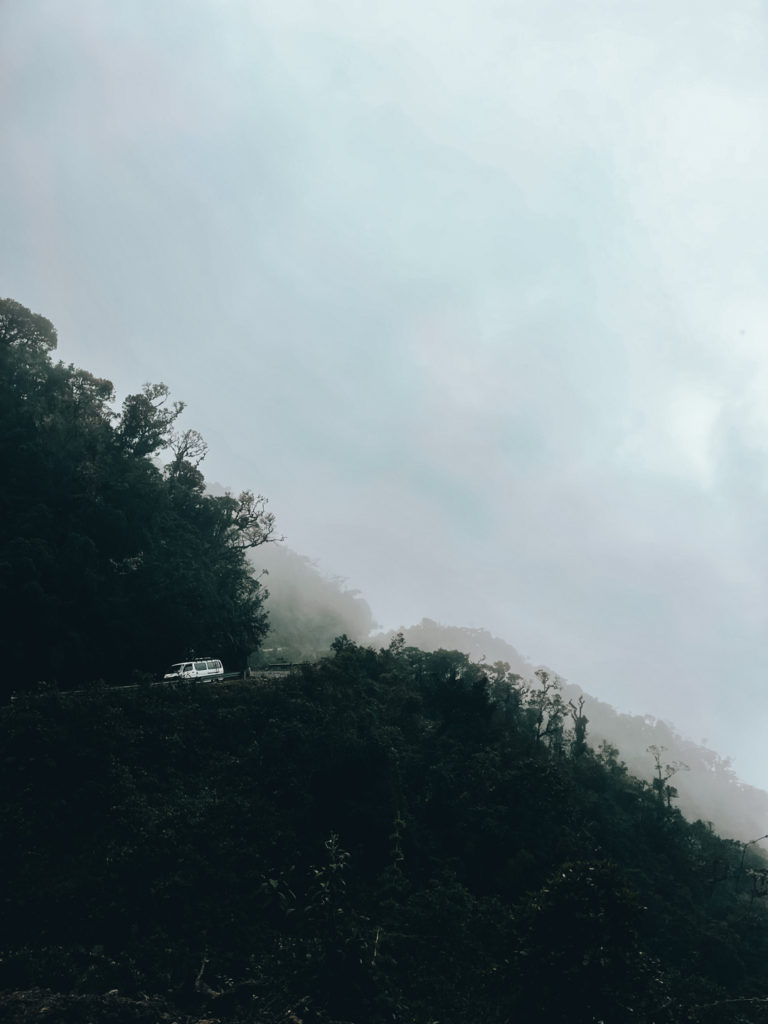
2. Don’t take biking this road too lightly
These days, there aren’t many deaths on the road and most of the tourist deaths happened when the road was still open to vehicles. However just because the death toll numbers are lower and it’s a popular tourist activity does not mean it’s 100% safe.
Biking Death Road really isn’t a joke. The roads are uneven, rocky and can be slippery depending on the weather, therefore it’s not difficult to get seriously injured. Personally, I’ve heard a fair share of recent injury stories so please, please don’t take this activity lightly. Stay focused throughout it and don’t be stupid by racing friends or making risky moves.
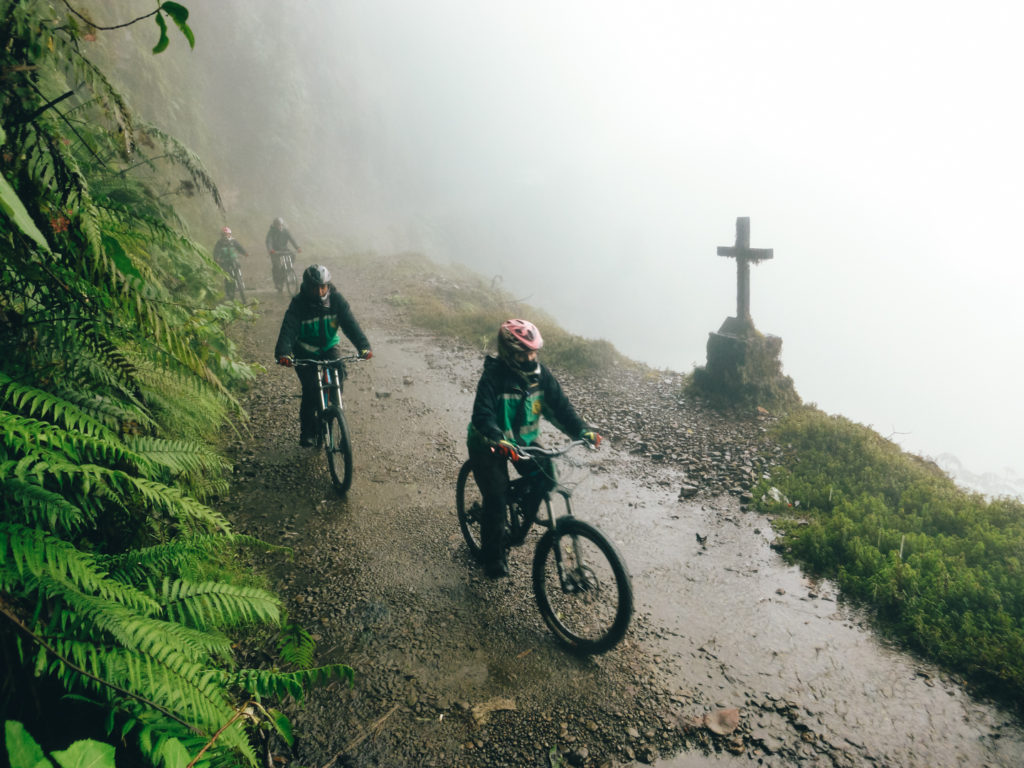
Biking down this wild road without travel insurance could be the dumbest thing you ever do. My motto is, if you’re gonna be stupid at least be smart about it. In the horrible scenario you get injured riding Death Road, you do not also want to be stuck with an expensive bill.
Don’t think it will happen to you? A week before I biked the road my friend told me her friend also biked it and fell during her ride braking her collarbone. She had to then return home after emergency services, didn’t have travel insurance and paid $7,000 USD out of her own pocket!!
So…give yourself some peace of mind and get the dang travel insurance. My go-to especially when doing adventurous activities like biking Death Road is World Nomads.
→ Search for coverage here
4. Not all tour companies are created equally
In La Paz you can find plenty of tour companies offering a trip to Death Road. But for something like this involving a lot of risk and reliance on good equipment, it’s important that your choice in company is intentional.
I did a lot of research on the different companies and found the best reviews were for Barracuda Biking and Gravity. Both have impeccable and reviews so I went with Barracuda Biking which was 400 bs ($55 USD) vs Gravity which was 850 bs ($122 USD).
After an incredible ride, I can’t recommend Barracuda Biking enough. The bikes and brakes were in perfect condition, we were provided weather-proof clothing, detailed instruction, amazing food, and promptly sent photos of the trip afterwards. Most important though, the guides were patient and spoke very, very clear English. This is important just because communication for an activity like this is really key.
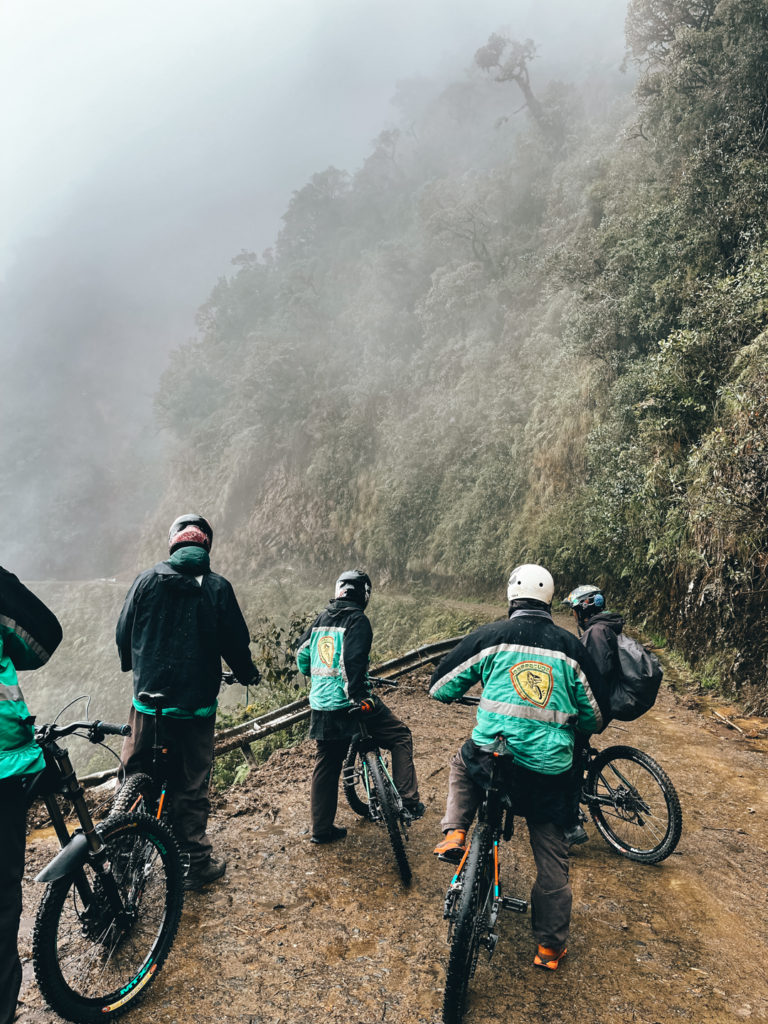
5. It could be a wet ride
Surprisingly, Death Road is a rain or shine activity and the climate can be unpredictable. Because the road hugs the dense jungle, it’s possible to experience rain or mist for the whole or part of your trip.
In fact the day I rode, it was misty the entirety of the trip (until the bottom) which was kind of disappointing because I missed some panoramic views. Although a bummer, it did add to the eeriness of the experience especially at the grave sites.
Nevertheless, hopefully you’re lucky enough to have sun but just in case I suggest packing a rain jacket. Unfortunately the outer wear provided by bike companies is typically only water resistant.
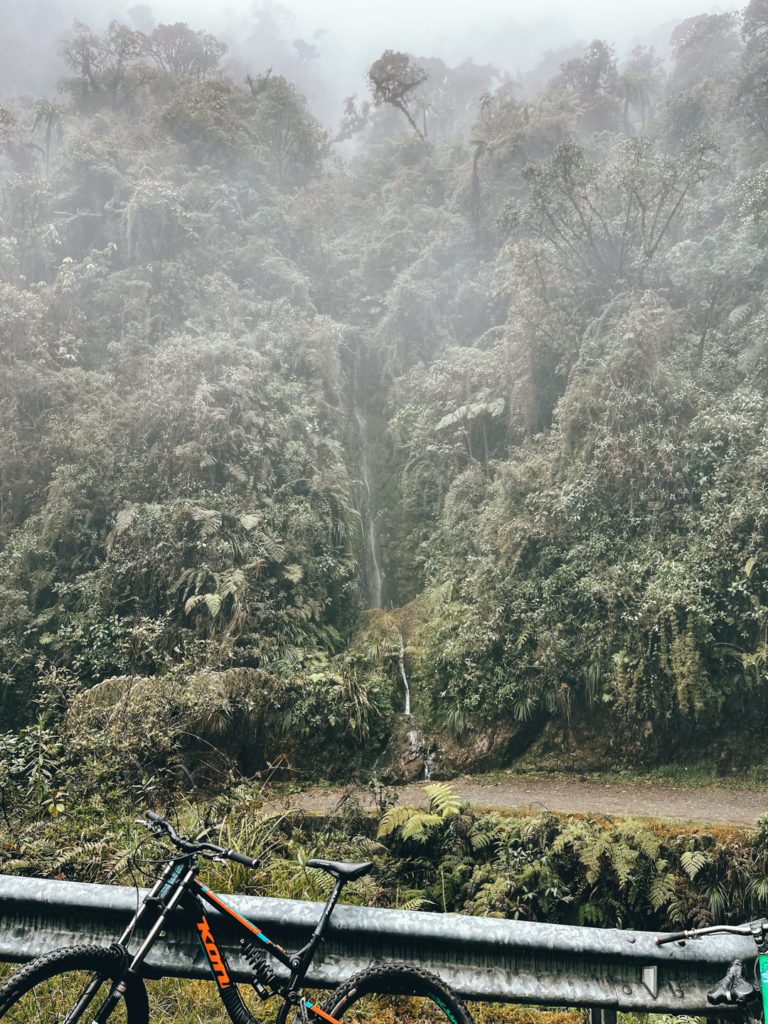
6. Tourists should have experience riding a bike
Maybe this is self-explanatory…but if you want to bike Death Road you should have some experience riding a bike because a tour of Death Road is just that – a tour. It doesn’t involve any formal or technical training.
So while you don’t have to be a mountain-biker, you do need some experience on bike even if just through cities and parks (although off roading of course helps).
7. Almost the whole road is downhill
You don’t need to worry about too much physical demand on this tour because the majority of the road is actually downhill. Which is great for your muscles, but does give you less control as you speed down the road at the mercy of your breaks…it’s an amazing adrenaline rush.
8. The sides of the road are switched
Usually in Bolivia, cars drive on the right side of the road, the same as in the U.S.. However, because the edge of Death Road is on the left, after many deadly years they actually made an exception for Death Road and switched the sides of the road so that drivers could see the edge and manage better.
When the road was still open, deaths still occurred but this switch cut the average annual deaths in half and so the rule still remains. Therefore, in the rarity that you see a car while biking, note they’ll be on the opposite side that you’re used to and so you will move to the right.
9. The companies van will follow the whole time in case
Worried about bringing too many things? Don’t be. The van that you ride in from La Paz will actually follow your group down Death Road and make stops with you. Therefore you’ll have access to your things every 20 minutes or so should you want to take layers off or grab something from your bag.
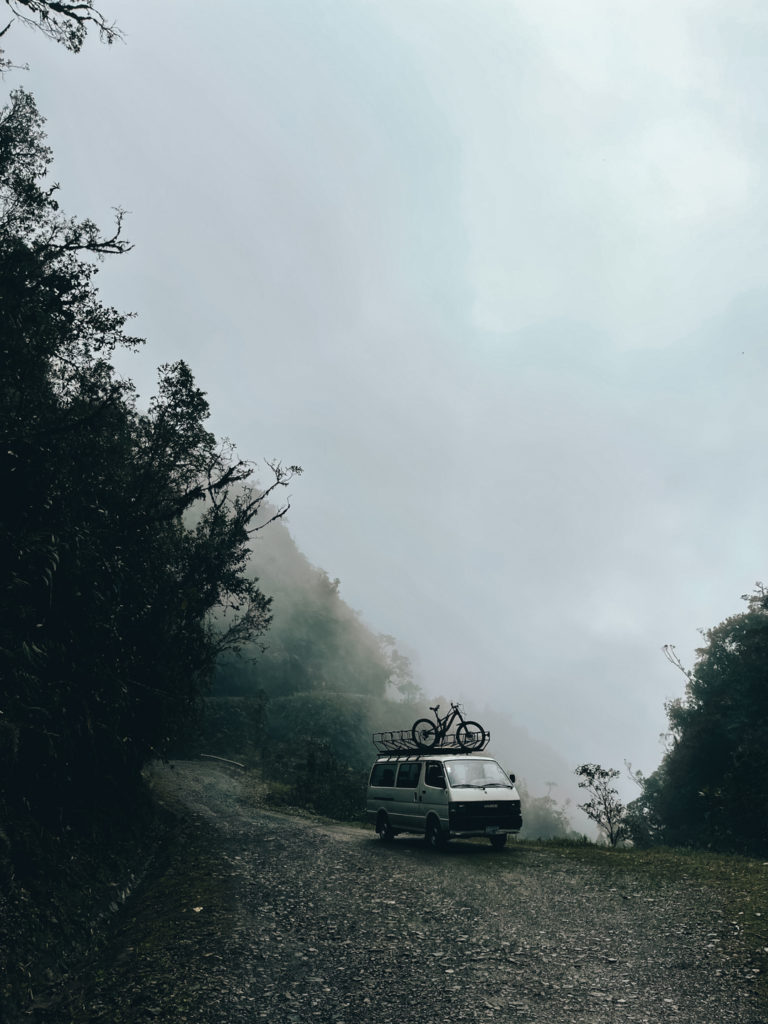
10. Two hands on the handle-bars always
My final recommendation is to remember, two hands on the handle-bars always!! I know I sound like your Mom (which is hypocritical as someone who absolutely sped down this road), but seriously, a lot of the freak accidents can be attributed to not focusing and/or trying to multi-function.
It’s not a great idea to try and fix your hair, or necklace, or GoPro while you’re flying down loose rocks near an edge. If you’re wearing something like glasses or a hat that constantly needs adjusting, better to just take it off.

Now that my list of precautions is out of the way I can see guilt-free to fucking go for it. Death Road was one of the most memorable and fun activities of my Bolivian trip. At the bottom of the road I found myself thinking a ski lift would be really nice because I wanted to do it all over again.
But for legal purposes, if anyone asks, I didn’t tell you do it.
More Resources for Your Trip to LA PAZ:
Accommodation RECOMMENDATIONS
Hostels: There are a few good hostels in La Paz including Adventure Brew which is very close to the bus station, Wild Rover which is more of a party hostel and in a great location, and Selina with comfy fluffy blankets and comfy beds. Search for hostel in La Paz here.
Cheap hotels: In La Paz you can find basic hotel rooms for as little as $35. Some highly rated ones include Hotel Sagarnaga and Las Brisas.
Boutique hotels: If you’re looking for a step up on hotels, but still at an affordable price, then try one of these colonial style hotels: Hotel Boutique El Consulado with a garden to relax in; Hotel Rosario with Amarya and Quechua decorations, El Museo ex-Tinka close to Sopocachi Mercado; or Patio de Piedra with an excellent location in the heart of La Paz.
Search for more hotels on Booking.com
Flights to La Paz
You can fly directly to La Paz to El Alto International Airport. To find the best prices I recommend using Skyscanner.
Bus to La Paz
La Paz is easily reached by bus from elsewhere in Bolivia or even Peru. To search and purchase a bus, I recommend using BusBud or TicketsBolivia.
Travel Insurance
I recommend WorldNomads for backpackers and adventurous travelers. You can search for World Nomads coverage here.
Other things to do in La Paz
There are many things to do in the cultural hub of La Paz including the fascinating walking tour with Red Cup, the Cholitas Wresting Show, ride the teleférico, and explore markets. A little ways outside of the city you can also explore exceptional landscapes such as Valle De Las Ánimas, Valle de La Luna, or climb Huayna Potosi.
Related posts
-
Biking Death Road in Bolivia: What You Need to Know
So you want to bike the most dangerous road in Bolivia? Biking Death Road is a bucket list activity ...
Bolivia
Liked this post? Pin it!
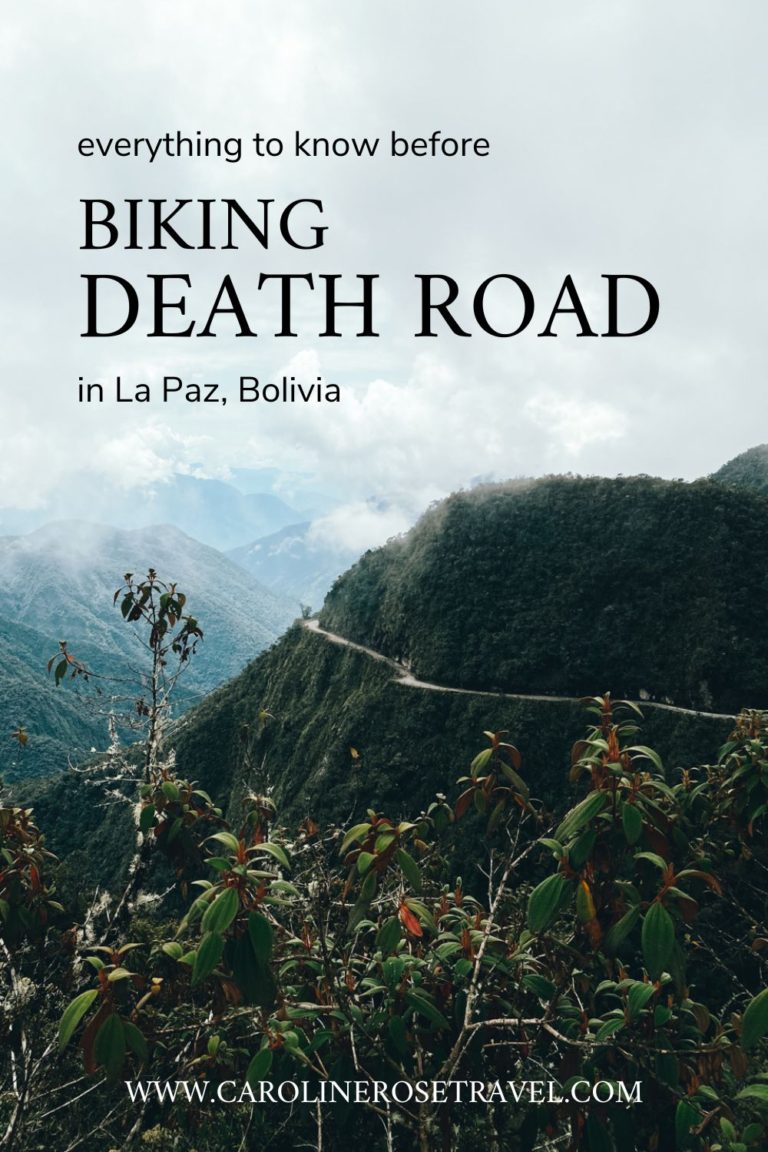



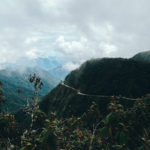
James halliday
Posted at 19:45h, 22 DecemberWorld no and explicitly says they don’t cover the death road in their travel insurance this is direct from their website
These include, but are not limited to:
No matter how safe you are, we won’t cover any mountain biking on the infamous Death Road – otherwise known as Yungas Road in Bolivia.
Caroline Rose
Posted at 15:49h, 28 DecemberThanks for adding this information! I’ll double check and then remove from this blog post.